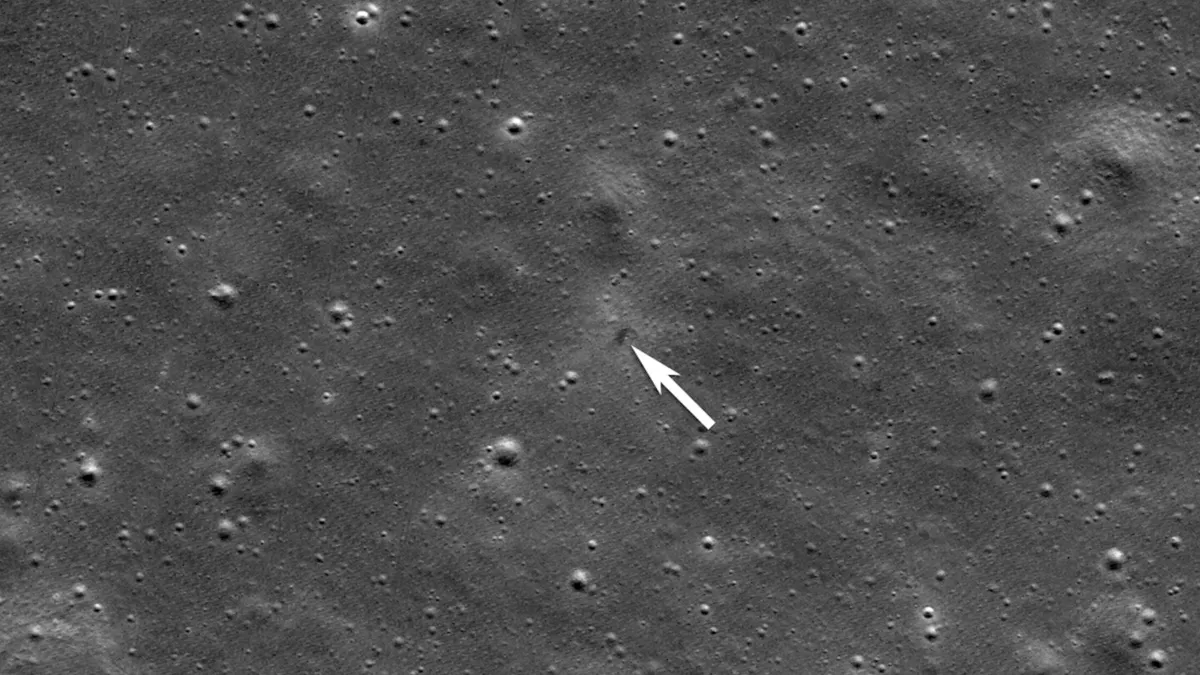
A laser navigating tool led to a catastrophic failure for a Japanese company’s lunar lander earlier this month, resulting in its crash landing on the moon. This unfortunate incident was announced by officials from ispace during a press conference in Tokyo on Tuesday. The crash marked the second consecutive failure for ispace in a span of two years, raising questions about the reliability of their lunar missions.
This time, the company’s lander, named Resilience, was on a mission to land in the moon’s far northern region known as Mare Frigoris, or the Sea of Cold. The situation worsened when NASA’s Lunar Reconnaissance Orbiter captured images of the crash site last week, showcasing the wreckage of Resilience along with its mini rover. The investigation into the crash revealed that the accident was primarily caused by the lander’s laser range finder, which failed to activate in a timely manner and accurately gauge the spacecraft’s distance from the lunar surface.
As Resilience descended at an alarming rate of 138 feet (42 meters) per second, contact was lost, leading to the crash just five seconds later. This incident echoes ispace’s first lunar mission, which ended in failure due to software issues causing the lander to crash in 2023 during a similar critical descent phase.
In recent years, there have been seven lunar landing attempts by private companies, but only one has achieved complete success: Firefly Aerospace with its Blue Ghost lander, which successfully touched down in March. Notably, Blue Ghost launched alongside Resilience in January, sharing a ride aboard a SpaceX rocket from Florida. Aside from Firefly, only five countries have successfully executed lunar landings: the Soviet Union, the United States, China, India, and Japan. Furthermore, the U.S. remains the only nation to have sent astronauts to the moon, a feat accomplished through NASA’s Apollo program over 50 years ago.
Despite experiencing back-to-back failures, ispace is determined to continue its lunar exploration efforts. The company is planning a third moon landing attempt in 2027, in collaboration with NASA, as well as a fourth mission that is currently in the works. Company officials have indicated that these additional tests and enhancements will increase the development costs by approximately 1.5 billion yen (over $10 million).
CEO and founder Takeshi Hakamada emphasized that ispace remains resilient in the face of setbacks, aiming to restore customer confidence in their missions. To bolster their efforts, outside experts will be included in the accident review process, and ispace will enhance its collaboration with the Japanese Space Agency on technical issues. Hakamada stated, “We’re firmly taking the next step toward our future missions,” reinforcing the company's commitment to overcoming challenges.
The Associated Press Health and Science Department is supported by the Howard Hughes Medical Institute’s Department of Science Education and the Robert Wood Johnson Foundation. The AP is solely responsible for all content related to this article.